Excerpts from Jim Conrad's
Naturalist Newsletter
Entry dated November 9, 2023, from notes taken near Cascadas de La Piedad waterfall 3kms NW of the community of San Pablo, municipality of Almeaco de Bonfil; oak forest atop bedrock of thick layers of compacted volcanic ash, or tuff; N20.1024°, W100.0019°, elevation 2360 meters (7750ft); extreme southern Querétaro state, MÉXICO
BRICKELLIA PENDULA
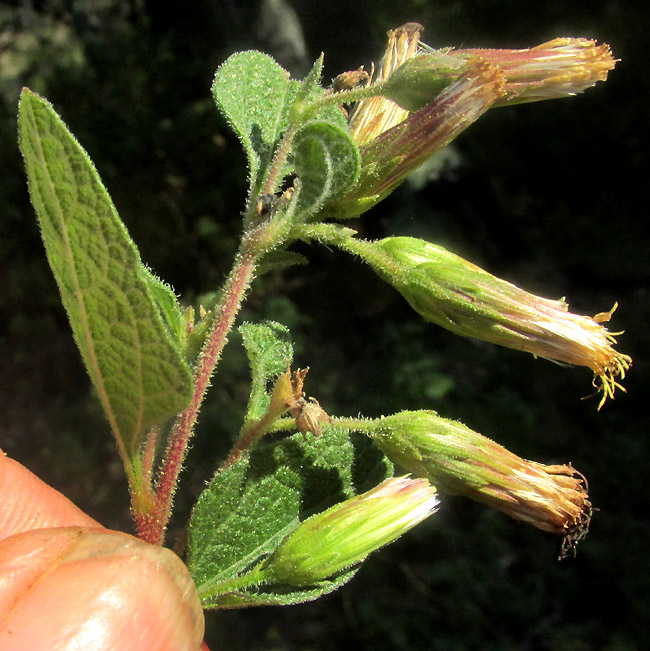
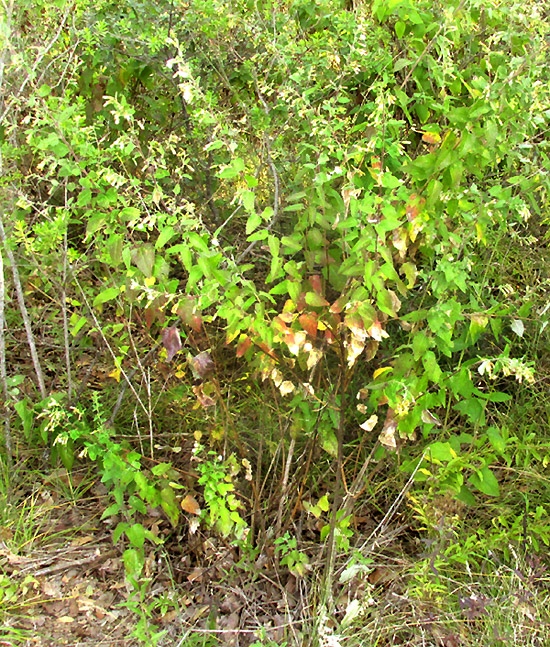
Atop a ridge covered with a somewhat open oak forest, flowering heads, or capitula, such as the above clustered at a few branch tips of the head-tall bush at the right. With capitula comprising several disc florets with slender, cylindrical corollas, the bush clearly was a member of the most species-rich of all plant families, the Composite/Aster/Sunflower Family, the Asteraceae.
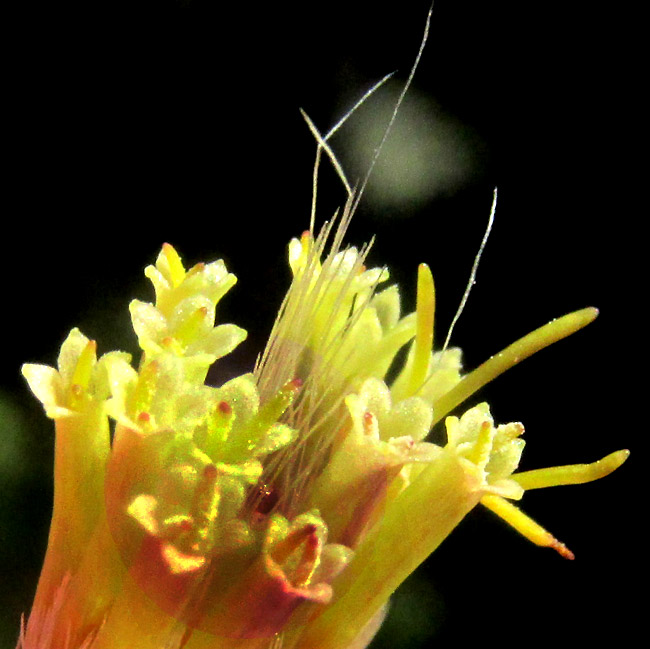
The single capitulum producing open corollas is shown above. About a dozen florets are produced. I can't explain why florets on picture's right side develop long style branches and the others don't, and why florets in the center have long, slender bristles among them.
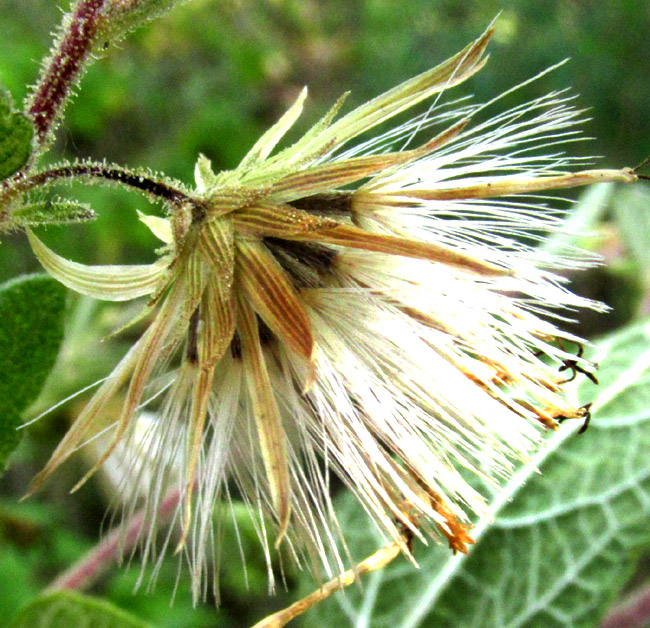

Some branch tips bore mature heads with their pale brown, scale-like phyllaries of various lengths spreading widely, and dark brown, one-seeded, cypsela-type fruits bearing clusters of long, white bristles. These bristles will do parachute duty when wind comes along dispersing the fruits. The close-up at the left shows that the sides of each dark-brown cypsela bear slender ridges, about ten all around.

Later, for identification to species level, it would be critical to know whether hairs covering stem tips where flowers were being produced bore glands, or whether the hairs were glandless. At the right it's clear that the hairs bore glands.
Here's what the leaves looked like at mid level:

Mostly they grew one leaf per stem node. And here's the above leaf seen from below:

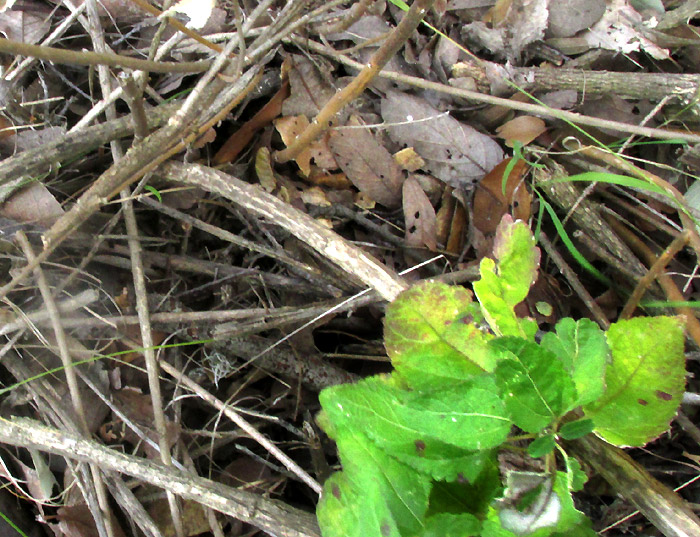
Note that the undersurface is short-hairy, but not at all whitened with woolly hairs. On the stem, tiny glistens announce more gland-tipped hairs. At the left, the bush's non-woody but sturdy and stiff stems -- both this year's and those of previous seasons -- rise alongside the next season's new green shoot.
All these details may seem like more than enough, but all were needed for identification to species level. Previously we've encountered a very similar and closely related bush, Brickellia tomentella, so already the bush's identity as a member of the genus Brickellia was known; in English, all Brickellia species generally are known as brickellbushes. However, our current plant differed in subtle details from that species, particularly by bearing so many gland-tipped hairs.
In our part of upland, central Mexico, if you have a Brickellia with only about a dozen florets in each capitulum, leaf bases are more or less squared, or truncate, and at least the outer, flower-bearing stems are abundantly covered with gland-tipped hairs, you have BRICKELLIA PENDULA, with no English name just for itself.
Like the very similar Brickellia tomentella, this species is endemic just to the central highlands of Mexico, where it turns up in pastures and mountain temperate forests.
I find no mention of traditional Mexican medicinal uses for this species. However, pollinators certainly benefit from the flowers, the soil from the bush's protection, and I'm appreciative of the oxygen it produced for me the day I met it.